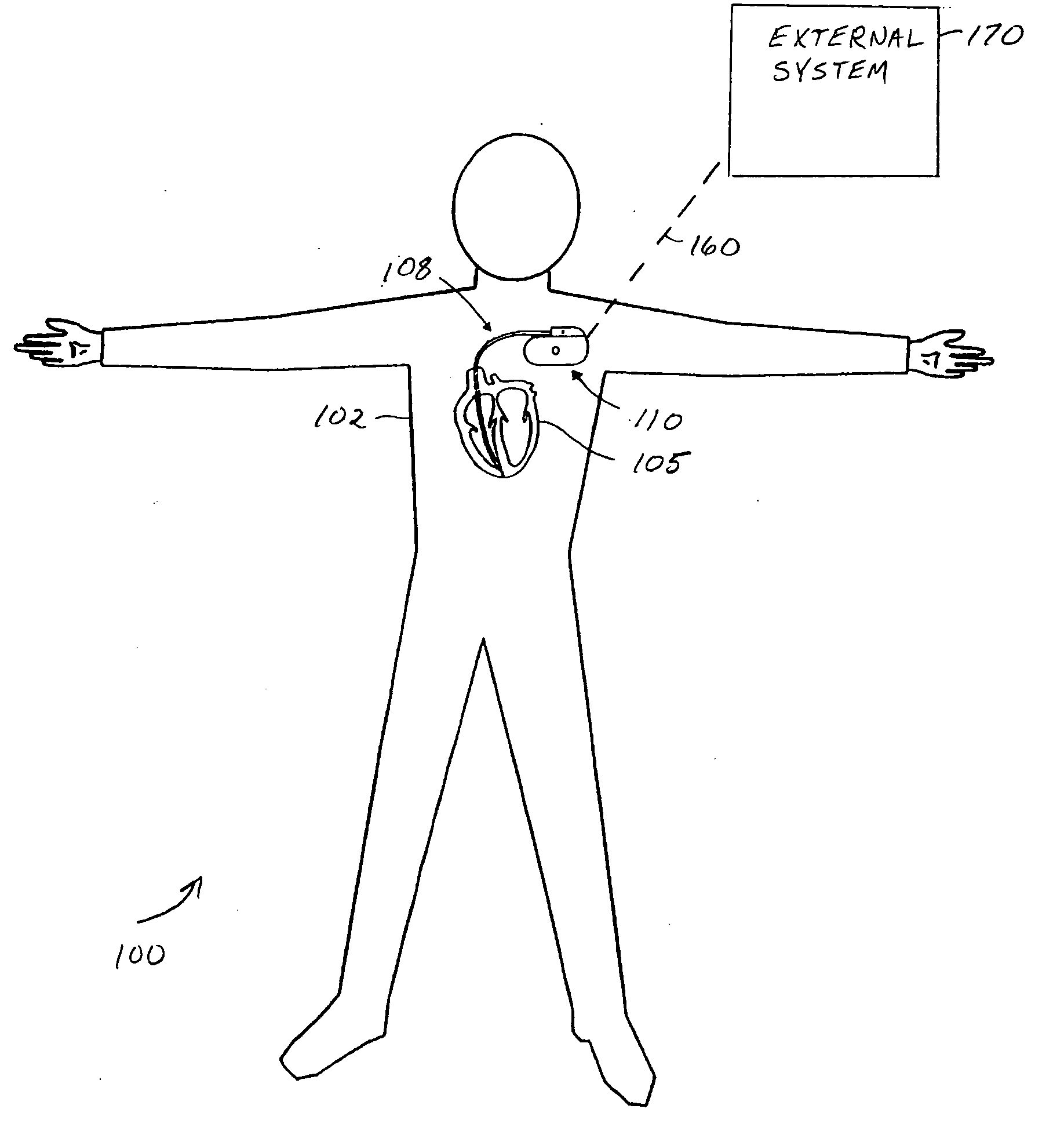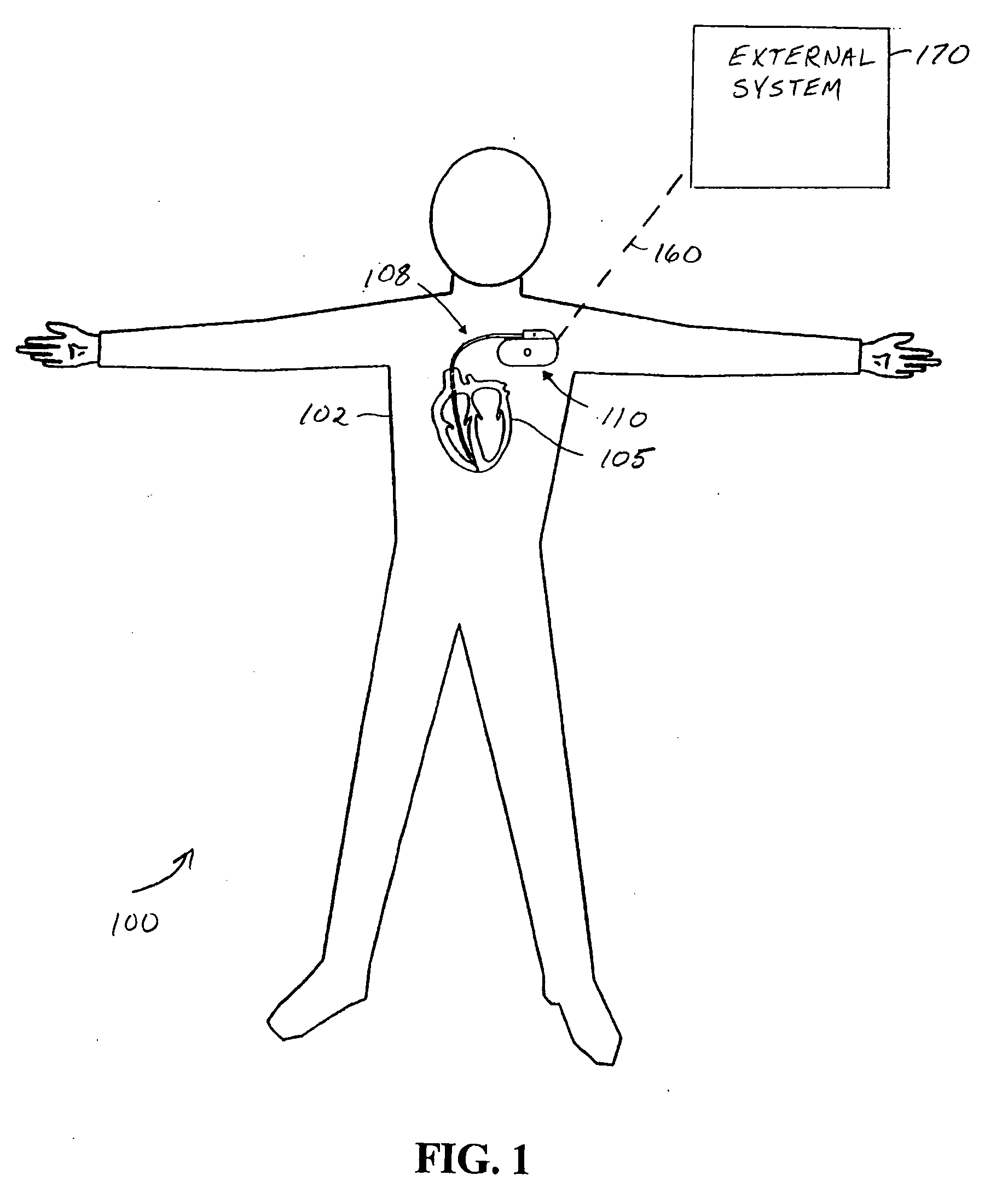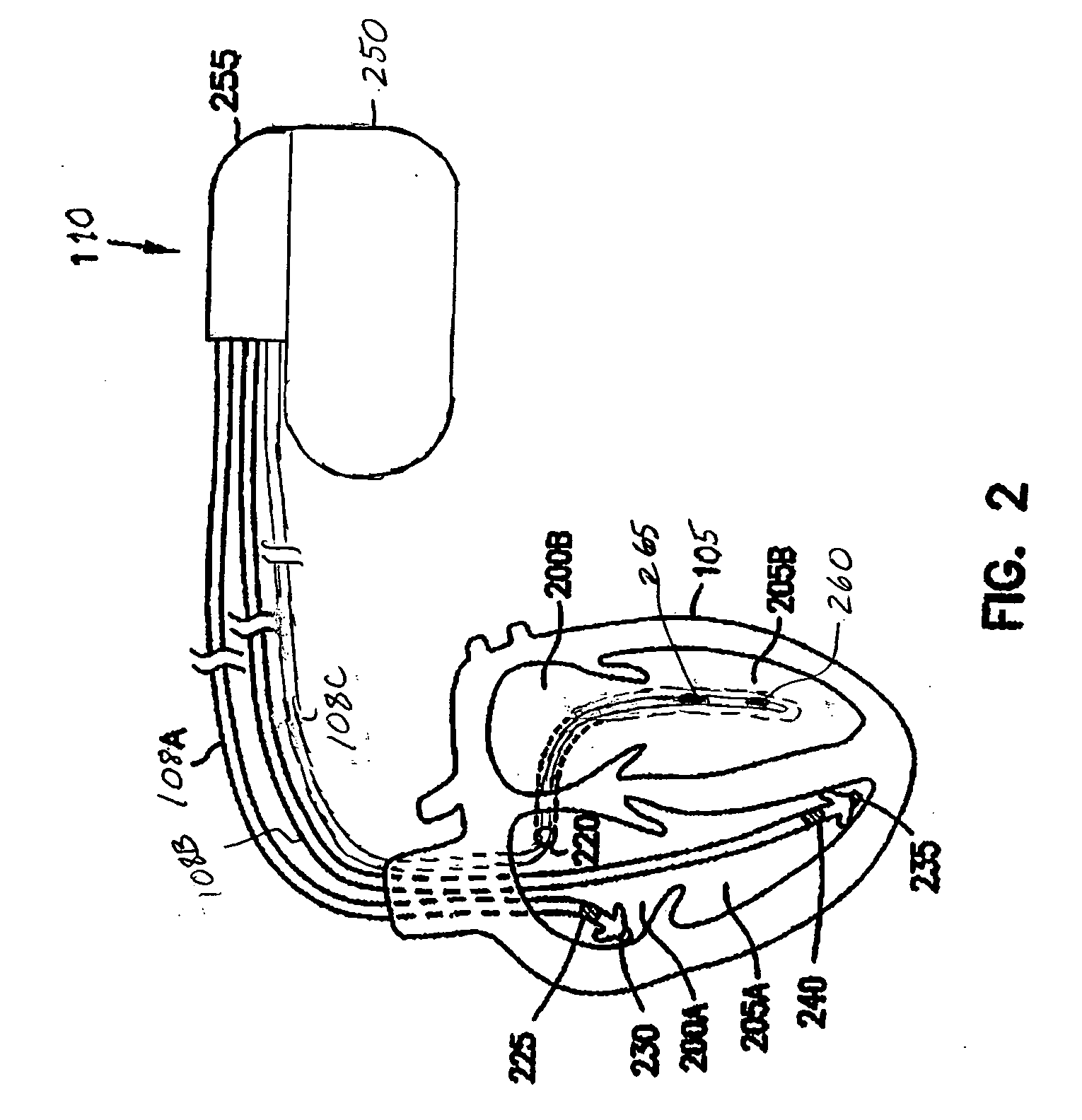Systems and methods for valvular regurgitation detection
a technology of valvular regurgitation and detection method, which is applied in the field of systems, systems and methods for monitoring the mechanical activity of the heart, can solve the problems of blood leakage, turbulence near the mitral annulus, and blood leakage backward through the tricuspid valv
- Summary
- Abstract
- Description
- Claims
- Application Information
AI Technical Summary
Benefits of technology
Problems solved by technology
Method used
Image
Examples
Embodiment Construction
[0020] In the following detailed description, reference is made to the accompanying drawings which form a part hereof, and specific embodiments in which the invention may be practiced are shown by way of illustration. It is to be understood that other embodiments may be used and structural or logical changes may be made without departing from the scope of the present invention.
[0021] Vavlular regurgitation (VR) is manifested as a turbulent blood flow in the left or right atrium or near the aortic valve during systole. VR refers to mitral regurgitation (MR), or tricuspid regurgitation (TR), or aortic regurgitation (AR), or a combination of two or more of MR, TR, and AR. Some amount of VR is believed present during early systole in eighty percent of patients exhibiting interventricular dyssynchrony between their right and left ventricles. Sensors can be included in implantable medical devices (IMDs) to provide internal patient diagnosis. The output from one or more sensors appropriat...
PUM
 Login to View More
Login to View More Abstract
Description
Claims
Application Information
 Login to View More
Login to View More - R&D
- Intellectual Property
- Life Sciences
- Materials
- Tech Scout
- Unparalleled Data Quality
- Higher Quality Content
- 60% Fewer Hallucinations
Browse by: Latest US Patents, China's latest patents, Technical Efficacy Thesaurus, Application Domain, Technology Topic, Popular Technical Reports.
© 2025 PatSnap. All rights reserved.Legal|Privacy policy|Modern Slavery Act Transparency Statement|Sitemap|About US| Contact US: help@patsnap.com



